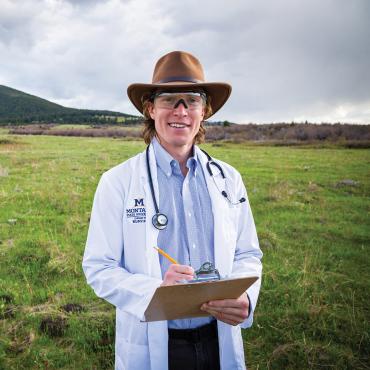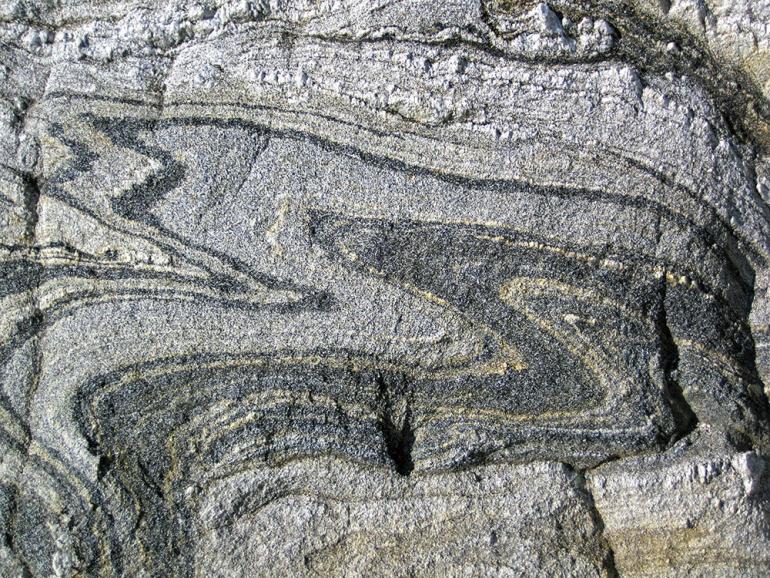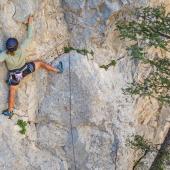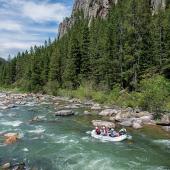Rocky Roots
The beginning of Earth's story, told by Montana's highest peaks.
Bozeman is surrounded by mountains, and we all know that mountains are formed by geologic processes. That’s why so many geologists hang out in the mountains, right? Or is it that people who hang out in the mountains become geologists? In any case, you’ve probably picked up a few inklings about how the mountains of southwest Montana formed. Your geology-nerd friend goes on a drunken rant after his fifth beer; you find a cool fossil while hiking in the Bridgers; you notice that different mountain ranges are made of different types of rocks. But how does it all fit together? Our neighboring mountains tell a near-complete story of the greater Rocky Mountains. If you understand the geology of southwest Montana, you will begin to see the stories of Earth’s history unfold before your eyes. From a barren, lifeless planet to the beautiful world we know it as today, the Rockies preserve nearly four billion years of time. The first part of that story is illustrated by the Beartooth Mountains.
To understand how the Beartooths formed, it’s important to know that all mountains are built by plate tectonics. The Earth’s crust, its outermost layer, is broken into various plates. Plates are made up of two different types of crust: continental crust contains primarily lighter-weight minerals, whereas oceanic crust has higher concentrations of heavy minerals. The Earth’s crust floats on top of the mantle, a sea of magma, and because continental crust is lighter, or specifically lower-density, it is more buoyant and floats at a higher elevation than oceanic crust. At the boundaries between continental and oceanic crust, this difference in density can cause oceanic crust to slide underneath continental crust—a process called subduction, which is how the Rocky Mountains were built. We’ll get back to subduction shortly, but first, let’s take a look at some of the oldest continental crust on Earth.
Around four billion years ago, the first continents began to form as massive volumes of magma rose to Earth’s surface and cooled. The continents were initially composed entirely of igneous rock—solidified magma—but over time, these rocks were weathered and eroded into sediments and deposited as sedimentary rocks in low-lying basins. As more and more sedimentary rocks began to stack on top of each other, the oldest rocks were buried deeply, subjecting them to high amounts of heat and pressure. For anyone with a fundamental background in geology, “heat and pressure” might ring a bell: these are the ingredients needed to form metamorphic rocks. Rocks turn from igneous or sedimentary rocks into metamorphic rocks because, under intense heat and pressure, the most chemically stable arrangement of minerals is different than it is at Earth’s surface. Rocks do not melt when they metamorphose; rather, their minerals rearrange themselves into bands of lighter and heavier minerals. We see these bands in the zebra-stripe patterns of the Beartooths’ most prevalent rock type: gneiss (pronounced “nice”; geology puns ensue).
How did these rocks rise from deep within the crust to form Montana’s highest mountains? Subduction! Around 70 million years ago, oceanic crust began to slide beneath the continental crust on North America’s west coast. As the oceanic crust slid farther, it caused the continental crust to bulge upward to an even higher elevation, forming the Beartooth Plateau. Due to its high elevation, the plateau became covered in snow and ice throughout various ice ages. The ice flowed down toward lower elevations under its own weight, forming glaciers that eroded away the upper layers of sedimentary rocks. The glaciers eventually carved all the way down to the gneiss at the bottom, forming the peaks and valleys of the Beartooths. But not all of Montana’s mountains were uplifted as high as the Beartooths, and subsequently, not all of the sedimentary rocks have been carved away by glaciers. Stay tuned for our next issue, where we’ll take a look at the Bridger Range’s beautifully preserved sedimentary successions.
Jack Taylor studied geology at Dartmouth College and conducted his undergraduate thesis on sedimentary rocks of the northern Rockies.















